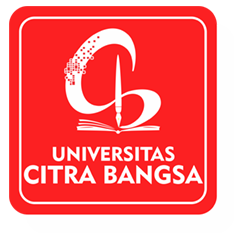PERANCANGAN APLIKASI SISTEM FORM VIRTUAL TOUR BERBASIS WEBSITE MENGGUNAKAN FRAMEWORK LARAVEL
DOI:
https://doi.org/10.37792/jukanti.v6i2.944Keywords:
Virtual Tour, PHP, Laravel FrameworkAbstract
Virtual tour is a change of flat landscape images into a round format. The virtual tour displays panoramas, videos, photos, floor plans or maps and may play sound depending on where the visitor is viewing it. In a virtual tour, visitors feel as if they are walking virtually through the scenery using a computer, television or cellphone. A virtual tour is an accurate simulation of a location that can be viewed 360 degrees, a website-based virtual tour can be accessed anytime and anywhere. Virtual tours can also be made using video recording devices such as cameras, smartphones, drones, etc., and will usually be displayed on a website. Virtual tours are useful for virtually guiding website visitors to places they want to go. When it is displayed on a website, it is necessary to have a virtual tour form to make it easier for an admin to enter data, save data, delete data, and change virtual tour data that will be displayed on the website so that it is easy for the data manager. Making an attractive and good website using the laravel framework, then using the programming languages php, html, css, and javascript. For the database using the MySQL database.
Downloads
References
A. Nicolas, D. Jutalo, Y. Rada, and D. A. Sitaniapessy, “Implementasi Virtual Tour Sebagai Media Informasi di Kampung Adat Praiyawang,” SENTIMAS: Seminar Nasional Penelitian dan Pengabdian Masyarakat, 2022, [Online]. Available: https://journal.irpi.or.id/index.php/sentimas
A. A. Wahid, “Analisis Metode Waterfall Untuk Pengembangan Sistem Informasi,” Jurnal Ilmu-ilmu Informatika dan Manajemen STMIK, Oct. 2020, Accessed: Nov. 03, 2022. [Online]. Available: https://www.researchgate.net/profile/Aceng-Wahid/publication/346397070_Analisis_Metode_Waterfall_Untuk_Pengembangan_Sistem_Informasi/links/5fbfa91092851c933f5d76b6/Analisis-Metode-Waterfall-Untuk-Pengembangan-Sistem-Informasi.pdf
A. Aleryani and A. Y. Aleryani, “Comparative Study between Data Flow Diagram and Use Case Diagram Some of the authors of this publication are also working on these related projects: 1000 Researchers FCIT View project A MODEL TO MEASURE THE IMPACT OF CULTURE ON E-READINESS FOR E-GOVERNMENT IN YEMEN View project Comparative Study between Data Flow Diagram and Use Case Diagram,” International Journal of Scientific and Research Publications, vol. 6, no. 3, p. 124, 2016, [Online]. Available: www.ijsrp.org
F. Luthfi, “Penggunaan Framework Laravel Dalam Rancang Bangun Modul Back-End Artikel Website Bisnisbisnis.ID,” 2017.
Y. Yudhanto and H. A. Prasetyo, Mudah Menguasai Framework Laravel. Jakarta: Elex Media Komputindo, 2019. Accessed: Nov. 03, 2022. [Online]. Available: https://www.google.co.id/books/edition/Mudah_Menguasai_Framework_Laravel/8tKdDwAAQBAJ?hl=id&gbpv=1
I. A. Aziz, B. Setiawan, R. Khanh, G. Nurdiyansyah, and Y. Yulianti, “Pengujian Black Box pada Aplikasi Sistem Kasir Berbasis Website Menggunakan Teknik Equivalence Partitions,” Jurnal Teknologi Sistem Informasi dan Aplikasi, vol. 3, no. 2, p. 82, Apr. 2020, doi: 10.32493/jtsi.v3i2.4693.
A. Rohmadi and V. Yasin, “Desain Dan Penerapan Website Tata Kelola Percetakan Pada CV Apic Design Kreas Indo Jakarta Dengan Metode Prototyping,” Journal Information System, Informatics and Computing, vol. 4, 2020, [Online]. Available: http://journal.stmikjayakarta.ac.id/index.php/jisicomTelp.+62-21-3905050,
Downloads
Published
How to Cite
Issue
Section
License
Copyright (c) 2023 Jurnal Pendidikan Teknologi Informasi (JUKANTI)

This work is licensed under a Creative Commons Attribution 4.0 International License.
JUKANTI Journal License
JUKANTI is committed to promoting open access and the free distribution of knowledge. We implement the following license model to ensure fair and ethical use of the materials published.
Creative Commons Attribution 4.0 International License (CC BY 4.0)
All articles published by JUKANTI are licensed under the Creative Commons Attribution 4.0 International License. This license allows users to:
- Copy and Distribute: Users are free to copy, distribute, and display the original work, provided they give appropriate credit to the authors and the source.
- Adapt: Users can modify, change, and build upon the original work, provided they give appropriate credit and indicate if changes were made.
- Commercial Use: Users can use the work for commercial purposes, provided they give appropriate credit.
Author Obligations
Authors publishing their articles with JUKANTI agree to:
- Guarantee that the work is original and free from copyright infringement.
- Grant permission to JUKANTI to publish the work under the CC BY 4.0 license.
- Retain the original copyright of their work, with the publication license granted to JUKANTI.
Compliance with DOAJ
JUKANTI is committed to complying with the guidelines and standards set by the Directory of Open Access Journals (DOAJ). We strive to ensure integrity, transparency, and high quality in all our publications.
For further questions or clarifications regarding this license, please contact Jukanti Editor at jukanti.ejournalcbn@gmail.com.



